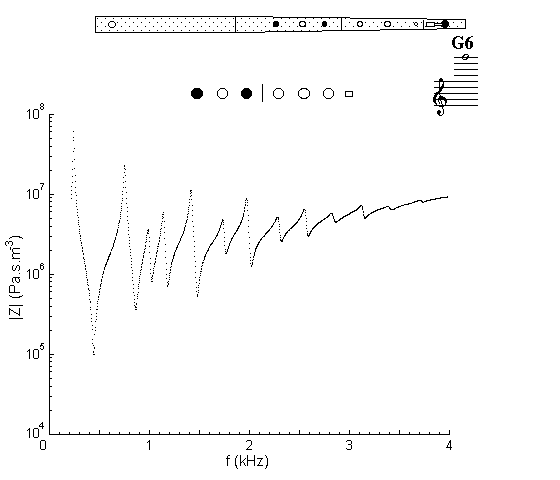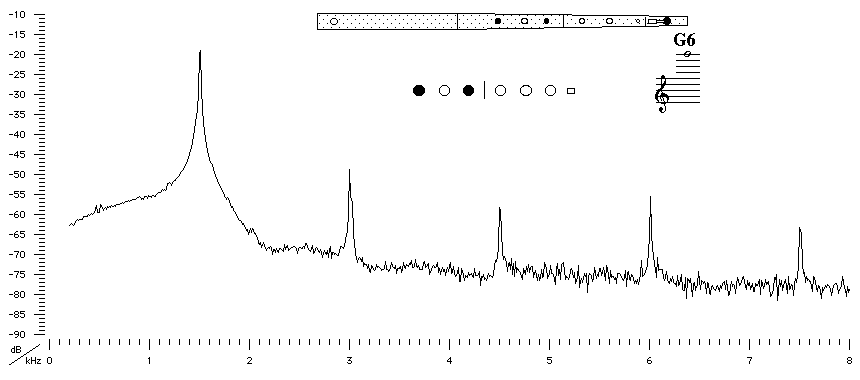| Acoustics of baroque, classical and modern flutes |
baroque flute |
G6 |

|
Acoustic and Fingering Schematic Non-specialist introduction
to acoustic impedance |
This fingering is comparable to that for G4 except for the use of the LH 2nd finger as a register hole. This creates a pressure node (or flow antinode) approximately three quarters of the way along the pipe, and thus allows G6 but not G4 or G5. It operates on the fifth minimum (we are well beyond the harmonic regime in the impedance curve). Comparing this with the G4 impedance spectrum, we see that the frequency of that minimum is little changed. See register holes in our introduction to flute acoustics. Compared with that for F6, this minimum is deep and the note is clear and readily played.

Sound spectrum
of a baroque flute played using fingering for G6.
![]()
![]()
![]()
![]() You can hear G6
played by Matthew Ridley.
You can hear G6
played by Matthew Ridley.
| Acoustic measurements are available for these flutes - modern B, modern C, classical C, classical D, classical flared, baroque Sound clips are available for modern B, classical flared and baroque |
To compare flutes, it is easiest to open a separate browser window for each instrument. |